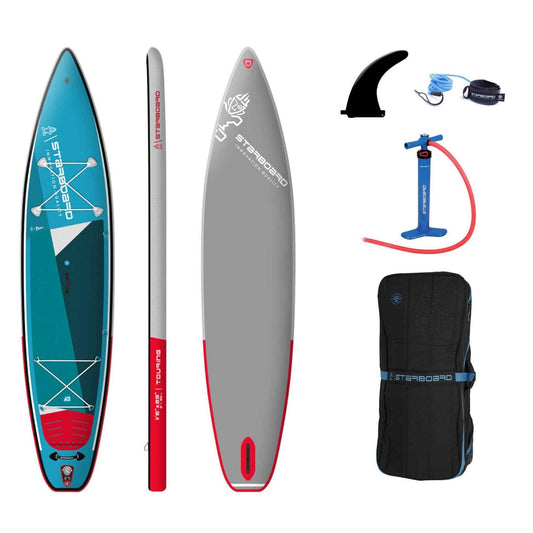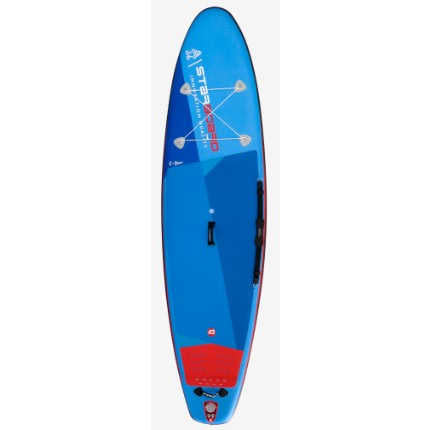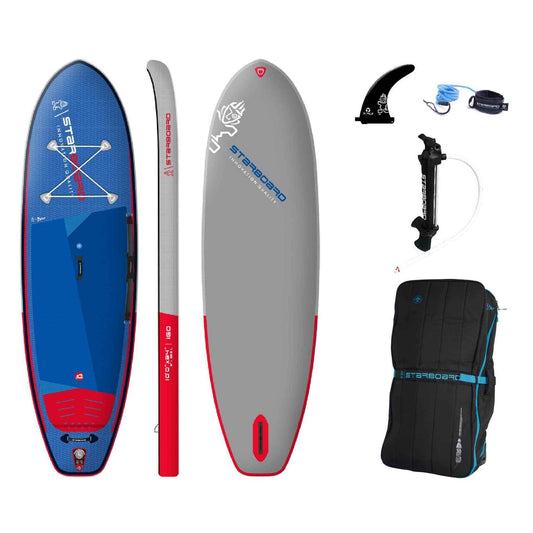Why is Inflatable SUP Construction so Important?
India HudsonShare
Why is construction so important?
The construction of inflatable boards is really important to its performance and getting a board which is high quality will save you from needing to upgrade your board or even worse losing the love for the sport.
The differences in the construction can make your board lighter and stiffer, a light board is more practical, and a stiffer board decreases the flex in the board for the rider, so the board is more stable and easier to paddle and glide on the water.
There are a few key elements to the construction of a board, in this blog we look at what they are.
What is DROPSTITCH? –
It is thousands of internal threads between the drop stitch fabric layers on the upper and underside of the board, which when filled with air allow the board to only expand to a certain point before they pull tight and form the rigid SUP's shape. Dropstitch fibres allow for a very strong shape to be formed without it losing shape over use and time.
You can get different types of dropstitch within the paddleboard:
-
What is LINEAR DROPSTITCH?
The Linear design is where the fibres run vertically down next to each other in the board (looking like lots of straight lines within the board). This is the traditional dropstitch method.
 |

|
-
What is WOVEN/CROSS STITCH?
The Woven process was designed to make boards stiffer and lighter. It is like the traditional dropstitch but the threads are woven in a cross like construction. Crossing the dropstitch fibres has allowed for less threads in total to be used in the board, but doesn’t impact on the stiffness. Less fibres reduces the weight, and so the board is lighter. Crossing the fibres also results in a stiffer board not only by reducing the flex, but also by reducing any factor for movement between the upper and under layers to the board.
 |

|
Is the board a SINGLE SKIN or DOUBLE LAYER construction?
-
SINGLE SKIN: + LIGHTWEIGHT + LOW PRICE - FLEX
The dropstitch fabric is covered in a liquid PVC layer which creates an airtight seal, this is most commonly known as single skin or single layer technology. This is the most basic way of making a board.
The two main advantages of a single skin board are the weight and the price.
Less material makes these boards very lightweight and they are a good budget option for anyone working on a tight budget. This construction will have a slightly lower Max Rider weight than a double layered version.
These boards however are not quite as durable and do not offer as much performance in less than perfect conditions due to them having more flex.
The stiffness of a single skin board can also rely on the quality of the PVC material. Being a ‘single layer’ board does not automatically mean that it is not stiff or of good quality, as the one single layer PVC could be thicker and a better quality material compared to 2 cheaper layers of PVC. A good reference is that a lilo is a single layer construction, but so is a car tyre!
-
STRINGER CONSTRUCTION
-Boards that have are single layer may say they have stringer construction. The difference is the addition of the 'stringer' to reduce flex but keep weight and cost down. The concept comes from traditional surfboard manufacture, where a thin 'stringer' runs down the centre of the board from nose to tail to provide increased stiffness. On these inflatable boards the stringer is a wide PVC strip glued down the centre of the board. As it's only a small addition of material it doesn't add that much weight, and the costs for these SUPs are still good. They still don't offer as much rigidity as a full double layer construction.
-
DOUBLE LAYER: + STIFFER + DURABLE + STRONGER + MAINTAINS SHAPE -LESS LIGHTWEIGHT
Rather than just a single layer of PVC these boards have two which means they have less flex offering more performance and durability. A stiffer board ensures maximum stability as well, although added materials do end up increasing the weight of the board.
GLUED or LAMINATED layer construction ( on double layered boards)?
-
GLUED: + LOW PRICE + EASIER TO FIX - WEIGHS MORE
A glued double layer construction starts with the single layer board; the dropstitch covered in an initial PVC layer. From there, a second layer of PVC is glued to the board (not laminated).
The extra PVC layer helps to increase the strength of the board. On the down-side the extra material and glue makes the board heavier.
-
LAMINATED: + STIFFER + DURABLE + STRONGER + MAINTAINS SHAPE + LIGHTWEIGHT - CAN BE MORE EXPENSIVE
The lamination process means that there isn’t the cosmetic wrinkles or bubbles on the board's surface caused by gluing the layers of the board together. Lamination fuses the two layers together through the heated process.
Laminated boards are 25-30% stiffer than those using a glued double layer construction. If you are looking for the best performance then we'd suggest you go for a laminated double layer board.
GLUED or WELDED rail construction?
The rail, or edge, of an inflatable SUP is made by joining the top and bottom sheets of the board with strips of reinforced PVC coated materials in an airtight manner.
-
GLUED: +LOW PRICE +EASIER TO FIX -WEIGHS MORE
Similarly to the glued layers principal, glued rails have the rail band glued onto each layer of the board to secure all edges and the shape of the board.
This is used by many brands as it is a practical method, can be easily remedied by the consumer if there is a leak or hole, although again it is a heavier method.
-
WELDED: +DURABLE +ECO-FRIENDLY +LIGHTWEIGHT
Heat-welding process whereby the top and bottom layers of the board are mechanically bonded. That means there is no glue used to join the top and bottom along the rails (where leakage can occur) and these joins are now bonded for life.
This makes the board more durable, longer lasting, lighter and better for the environment.
Top tips:
- If you can’t find out much about the construction of a board, avoid it.
- Rider weight can be a good indicator of construction. If you are looking at the spec of two different boards and everything looks the same between the two boards but the max rider weight on one is a lot lower it probably means it’s a single skin construction.
- Some brands use different names for their constructions, read carefully what they are as this can be misleading.
- If you are unsure, take professional advice on what board is best for you.
We would not rule out the quality of the board due to one of the factors of its construction. It is how the overall structure of the board is made and how this comes into effect practically on the water.]
Check out our Inflatable range to see what you may be interested in!
If you also need a hand picking the style of inflatable SUP, check out our blog 'Choosing your SUP'.











